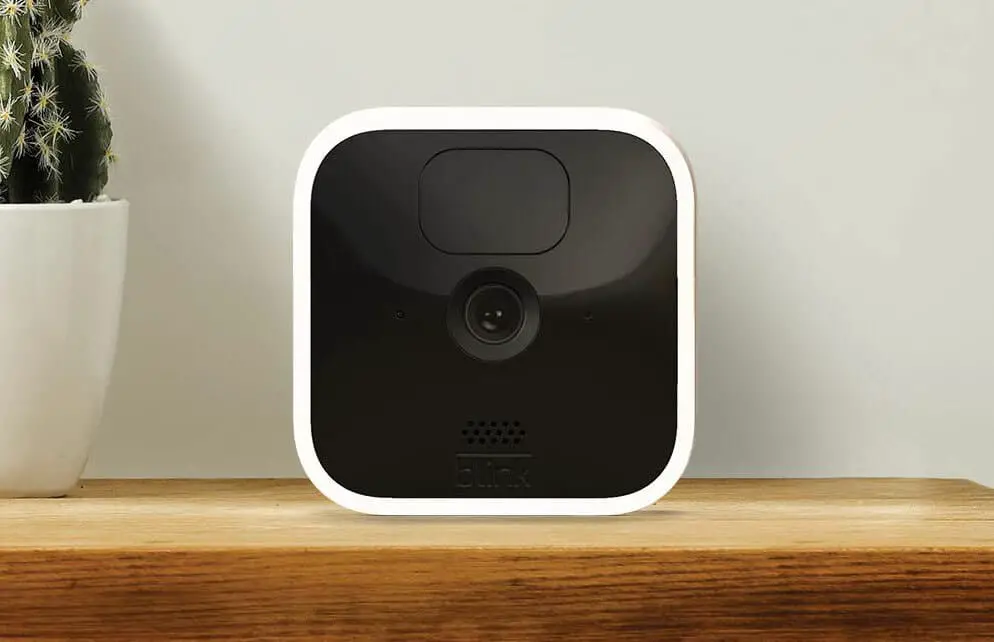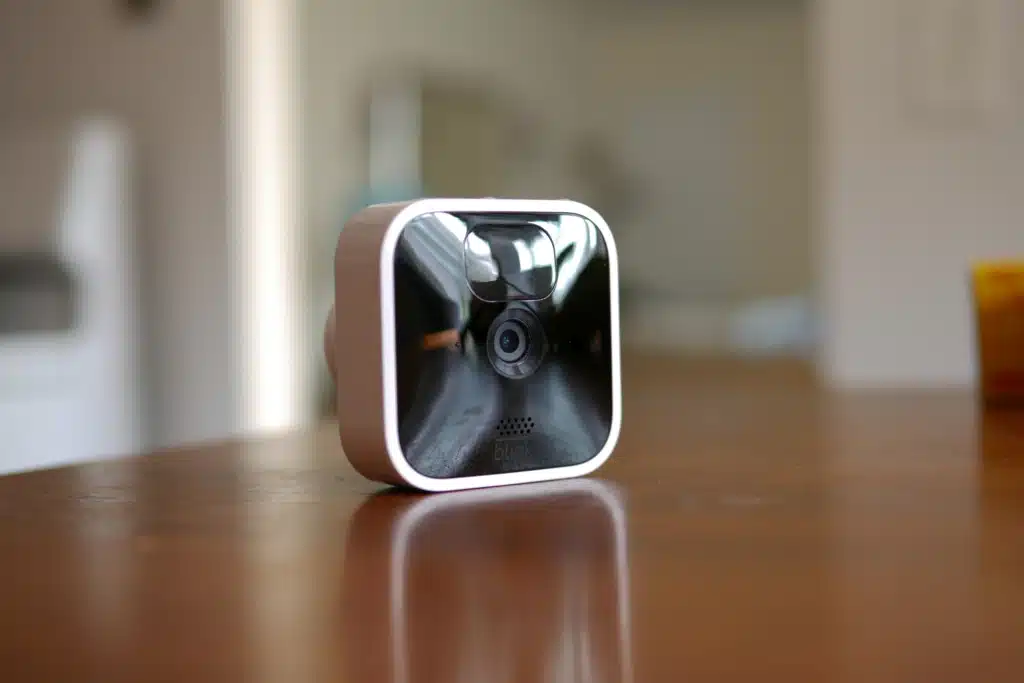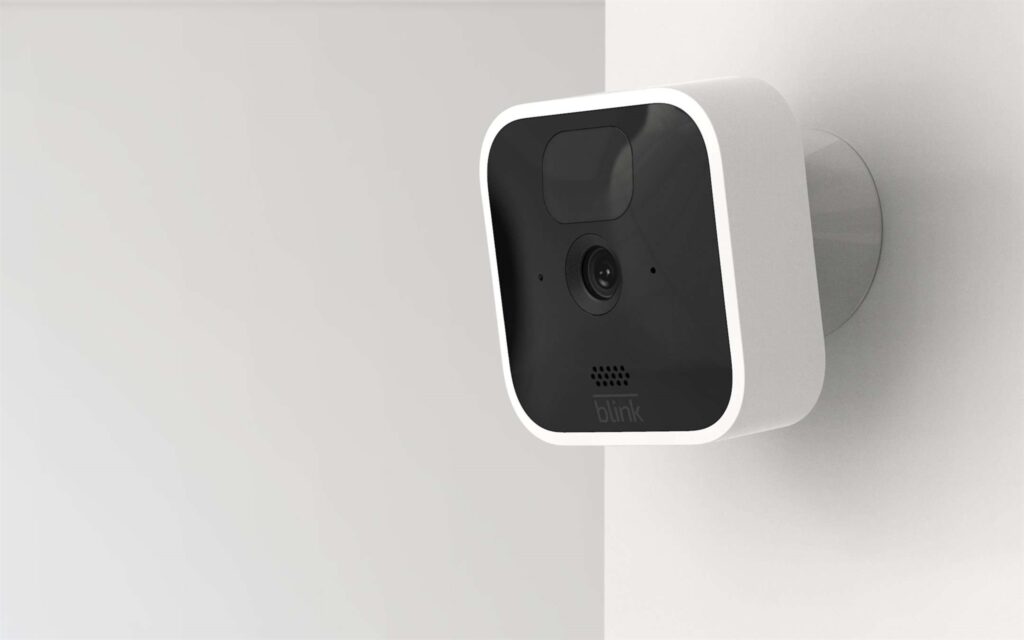Introduction
How To Set Up Blink Indoor Camera: This article will help you set up a Blink Indoor Camera. We’ll guide you through the setup procedure whether you’re a tech pro or a beginner.
Setting up your Blink Indoor Camera entails preparing the camera, connecting it to your Wi-Fi network, adjusting the settings, and mounting it in the best spot. We’ll explain everything and offer advice.
The Blink Indoor Camera’s motion detection, live view, two-way audio, and easy connection with smartphones and other devices are revealed during setup. These capabilities let you monitor your home remotely, receive fast notifications, and talk to people around the camera, providing security to your property.

Do I need a module for Blink indoor camera?
Does Mini require a Sync Module to work? No, Mini just requires 5 volt, 1amp, standard USB power through the included adapter, and an always-on Wi-Fi internet connection. Mini does not need a Sync Module, but is compatible with one. Adding the Mini to an existing system allows for shared scheduling.
Number of Cameras: If you have only one Blink Indoor Camera, you can operate it without a module. The camera can directly connect to your Wi-Fi network and communicate with the Blink cloud service. However, if you have multiple cameras, a module becomes essential. It allows you to connect and manage multiple cameras simultaneously from a single hub, simplifying the setup and providing a centralized control point.
Range and Connectivity: Another factor to consider is the range and connectivity strength of your home Wi-Fi network. In larger homes or areas with weaker Wi-Fi signals, using a module can improve the camera’s performance. The module acts as a bridge, extending the Wi-Fi range and ensuring reliable connectivity between the cameras and your network.
Storage and Features: The module also plays a role in storage options and additional features. If you opt for local storage using a USB flash drive, the module provides the necessary USB ports for connecting the storage device. Additionally, certain advanced features like extended battery life mode and local video storage are only available when using a module.
Expansion and Integration: If you plan to expand your Blink system in the future by adding more cameras or integrating other Blink devices, such as Blink Outdoor Cameras or Blink Video Doorbell, a module becomes a crucial component. It allows seamless integration and control of all the devices within your Blink ecosystem.
Can I set up a blink camera without Wi-Fi?
A3: Setting up a Blink camera without Wi-Fi is very simple. All you need to do is connect the Blink Sync Module to the camera, insert the AA batteries, and then connect the Sync Module to the Blink app. From there, you can configure the camera settings and begin using the camera.
Only Local: Without Wi-Fi, you can set up your Blink camera to store footage locally. You can’t view the camera’s live stream or receive smartphone notifications without an internet connection. The camera’s memory card or USB storage must be physically accessed to obtain the footage.
Mobile Hotspot: A suitable device may have a mobile hotspot or cellular data plan. Blink cameras can connect to mobile hotspots, however data usage and connectivity difficulties must be considered. Streaming video and using a mobile hotspot may use a lot of data, increasing fees or network slowness.
Local Network Options: Blink cameras can be set up without Wi-Fi via Ethernet, powerline adapters, or other local network solutions. These solutions can connect the camera to a network so you can view the live video and adjust settings in the Blink app. However, the alternative network solution must meet the camera’s needs and provide consistent, reliable communication.
Can you watch Blink indoor camera live?
Live View allows you to see your camera’s live video and hear sound directly from the Blink app and certain Alexa enabled devices. Blink cameras use your Wi-Fi network to send Live View. The connection must have 2 MB per second or faster upload speed (from your camera to the Blink app).
Blink App: The primary method to watch the Blink Indoor Camera live is through the Blink app. Blink cameras are managed through the iOS and Android Blink app. After connecting your Blink Indoor Camera to your Wi-Fi network, open the Blink app on your smartphone or tablet. The app’s home screen lists your cameras. Select a camera to view its live feed on the live view screen.
Multiple Views: The Blink app lets you switch between and live-stream several Blink Indoor Cameras. This function lets you monitor your house from one app.
Two-Way Audio: Two-way audio lets you talk to people around the Blink Indoor Camera while watching the live broadcast. The Blink app lets you listen to and speak to the camera’s built-in speaker using your smartphone’s microphone. You can interact with the monitored environment in the live view with this function.
How do I know if my blink indoor camera is on?
Blink cameras have an activity indicator in the form of a blue color LED light on the front of the camera. For the Blink Indoor, Outdoor and Mini, the Status LED is controlled in camera settings. Blink XT and XT2, have a physical hardware switch inside the camera to control whether the status light is on or off.
LED Indicator Light: The Blink Indoor Camera features an LED status indication light for convenient visual monitoring. The camera’s blue LED light indicates that it is turned on and working properly. This means the camera is ready to go and is now keeping an eye on things. A power failure or a malfunctioning camera could be the cause of a blinking or non-illuminated LED light.
Blink App: Another way to verify if your Blink Indoor Camera is on is by using the Blink app on your smartphone or tablet. Open the app and navigate to the camera’s live view screen. If you can see the live feed from the camera, it indicates that the camera is powered on and operational. If the live view is not available or the camera is showing as offline in the app, it may suggest an issue with the camera’s power or connectivity.
Motion Detection and Activity Alerts: Motion-detecting Blink Indoor Cameras alert smartphones and tablets. Your Blink camera is operational if it sends motion detection or activity alerts. These messages confirm the camera is working and catching movement in its range of view.
Camera Health Check: The Blink app’s “Camera Health Check” lets you check your Blink Indoor Camera’s functioning. Enter the app’s camera options. “Camera Health Check” shows the camera’s battery, signal, and connectivity. The camera is on and working if all Camera Health Check signs are normal.

What is needed for Blink cameras?
Wi-Fi Network Requirements:
- 2.4GHz 802.11b/g/n.
- Non-cellular 2.4 GHz Wi-Fi network: Blink devices are not compatible with MiFi devices or personal Wi-Fi hotspots provided by cellular network providers such as T-Mobile, Verizon, etc.
- IP Configuration: DHCP.
- Wi-Fi Security: WEP, WPA, WPA2 with TKIP SSID.
Blink Camera: The core component is, of course, the Blink camera itself. Blink offers a range of camera models, including the Blink Indoor Camera, Blink Outdoor Camera, and Blink Mini. These cameras are designed to capture video footage and provide various features such as motion detection, two-way audio, and live viewing capabilities. Depending on your specific needs, choose the appropriate Blink camera model that suits your requirements.
Blink Sync Module: The Blink Sync Module serves as the central hub for managing and controlling your Blink cameras. It connects to your home Wi-Fi network and acts as the intermediary between the cameras and the Blink cloud service. The Sync Module enables you to access the cameras remotely, receive notifications, and manage settings through the Blink app. It is an essential component for operating multiple Blink cameras and ensuring seamless connectivity.
Wi-Fi Network: A stable Wi-Fi network is required for the Blink cameras to function properly. The cameras rely on Wi-Fi connectivity to communicate with the Sync Module and the Blink cloud service. Ensure that you have a reliable and secure Wi-Fi network with sufficient coverage in the areas where you plan to install the cameras. The Sync Module within range of your Wi-Fi router for optimal performance.
Power Source: Blink cameras require a power source to operate. The power options vary depending on the model. Two AA lithium batteries or a micro-USB cable linked to an outlet power the Blink Indoor and Outdoor Cameras. Blink Mini runs on micro-USB. Get batteries or an electrical outlet for each camera.
What is the range of the blink camera?
What is the range of a Blink camera? Blink cameras work within 100 feet of the Blink Sync Module 2, which bridges the cameras to the mobile app and your home Wi-Fi network. The cameras can detect motion up to 20 feet from the camera.
Coverage Range: The coverage range of a Blink camera refers to the area that the camera can effectively monitor. The exact coverage range can vary depending on factors such as camera model, lens angle, and environmental conditions. Generally, Blink cameras have a field of view ranging from 110 to 140 degrees, allowing them to capture a wide area.
The camera to maximize its coverage range. Positioning the camera strategically can help ensure that the desired areas are within the camera’s field of view. Factors to consider include the camera’s mounting height, angle, and any potential obstructions that may affect the camera’s line of sight. Taking these aspects into account will help optimize the coverage range of your Blink camera.
Connectivity Range: Blink cameras can maintain a consistent connection with the Blink Sync Module or Wi-Fi network within their connectivity range. The Blink Sync Module connects cameras to the network and the Blink cloud service. The Blink Sync Module must be close to your Wi-Fi router to work properly.
Distance between the Blink Sync Module and the router, barriers like walls or other wireless devices, and Wi-Fi signal intensity affect connectivity range. Blink cameras may reach up to 100 feet (30 meters) indoors, depending on the conditions.
How do I attach a blink camera to the wall?
Mounting the Blink Mini Camera
While holding the mount in both hands, apply pressure to the outer ring while supporting the mount with the opposite hand. Select a location to mount your camera. When you’ve decided where it will go, use the included screws to secure the mount to your surface.
Determine the Camera Placement: Choose the location where you want to mount the Blink camera. Consider the area you wish to monitor and ensure the camera has an unobstructed view. Keep in mind factors such as entryways, blind spots, and optimal angles for capturing the desired area.
Attach the Wall Mount Bracket: Take the wall mount bracket that comes with your Blink camera or purchase a compatible one. Align the bracket with the desired mounting spot on the wall. Use a level to ensure it is straight. Mark the screw hole locations on the wall with a pencil.
Preparing the Wall: Based on your wall type (e.g., drywall, concrete, brick), select the appropriate screws and anchors. If necessary, drill pilot holes at the marked locations to make it easier to insert the anchors.
Attach the Bracket to the Wall: Securely attach the wall mount bracket to the wall using the selected screws and anchors. Ensure the bracket is tightly fastened to provide stability for the camera. Check for any wobbling or looseness.
Can anyone view my blink camera?
Any person signed in to your Blink account from this new device can view and manage your Blink devices and account. Although motion alerts may appear simultaneously on multiple devices for different people, only one person at a time can can access the Live View motion notification.
User Access Control: Blink cameras are linked to a user account created during the setup process. Only individuals with authorized access to your Blink account can view the camera’s feed and access its settings. It’s crucial to keep your Blink account credentials secure and avoid sharing them with unauthorized individuals.
Secure Remote Access: To view the live feed and manage your Blink camera remotely, you need to use the Blink app on a smartphone or tablet. The app requires authentication through your Blink account, ensuring that only authorized users can access the camera remotely. It’s important to install the Blink app on trusted devices and enable security measures such as device passcodes or biometric authentication.
Encryption: Blink cameras utilize encryption to secure the transmission of data between the camera, the Blink Sync Module, and the Blink cloud service. This encryption ensures that the camera’s feed and other data are protected from unauthorized access or interception.
Local Network Protection: Blink cameras connect to your home Wi-Fi network, and it’s crucial to maintain a secure network environment. Ensure that your Wi-Fi network is protected with a strong, unique password and employs encryption protocols such as WPA2. Regularly update your Wi-Fi router’s firmware to benefit from security patches and enhancements.

Conclusion
Blink Indoor Camera may have initially seemed like a daunting task, but hopefully, this guide has simplified the process for you. By taking the time to properly prepare the camera, connect it to your Wi-Fi network, configure the settings, and find the ideal placement, you have ensured optimal performance and maximum coverage for monitoring your home.
Now that your Blink Indoor Camera is up and running, you can enjoy the peace of mind that comes with knowing you have a reliable and efficient security system in place. From monitoring your front door to keeping an eye on your children or pets, the camera’s versatile features and seamless integration with your smartphone allow you to stay connected and in control wherever you are.
To explore the additional customization options available to you, such as adjusting motion detection sensitivity, setting up activity zones, and exploring cloud storage options. These features will enable you to tailor your Blink Indoor Camera experience to your specific needs and preferences, enhancing both the convenience and security it provides.

